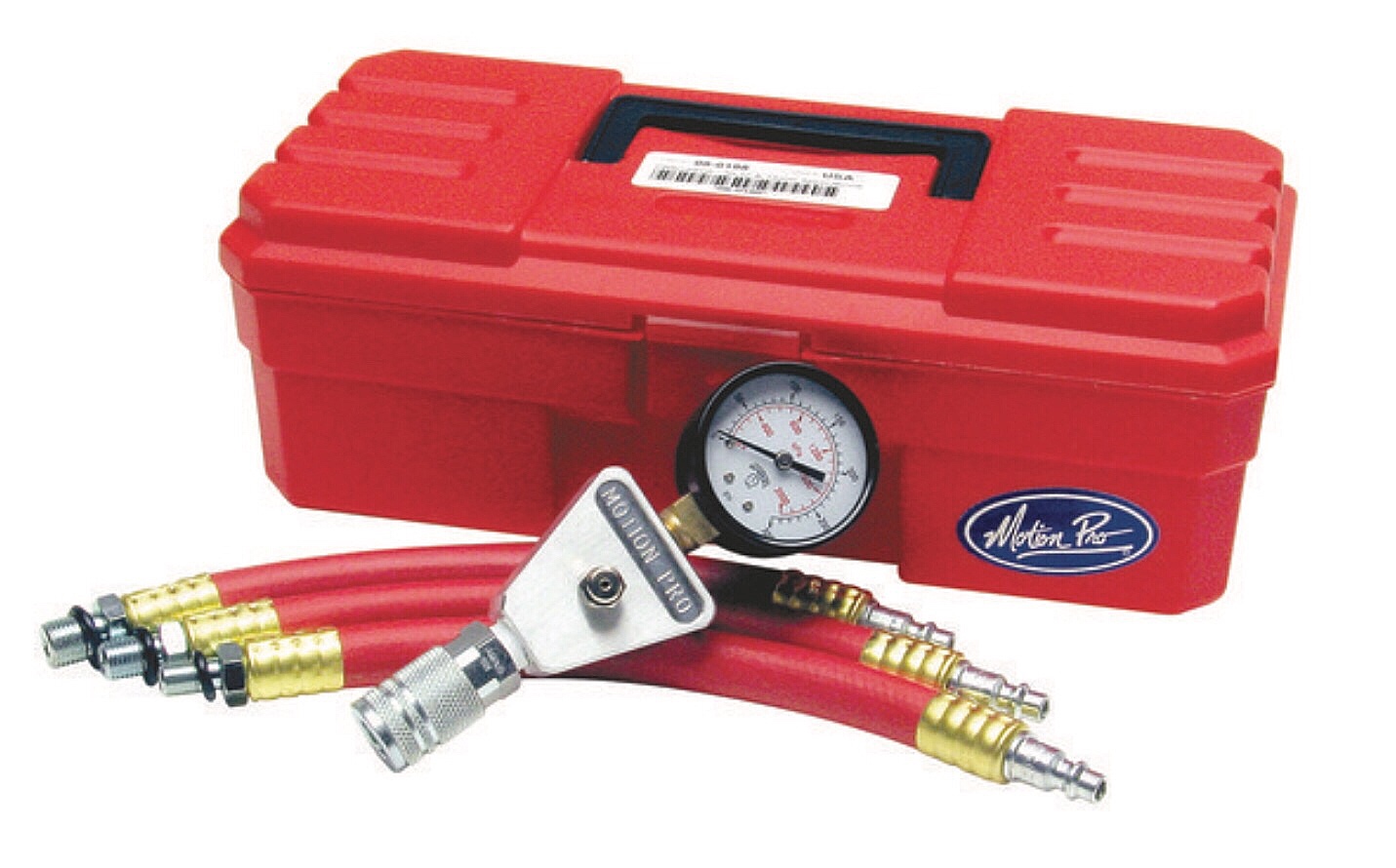|
This may not be what you want to hear, but there are certain responsibilities you must accept when owning a vintage Honda motorcycle. First, you must acquire a minimum number of tools and learn how to use them. Don't balk at this. Except for very specialized artisans whose services you can take advantage of, you're on your own, and heaven help you if you believe a tenth of the advice given on sohc4.net! Those people are not your friends.

|
|
This is a less expensive alternative to the accepted standard of the industry, the Snap-On individual hoses compression tester. Motion Pro's is not as durable, but it won't need to be used thousands of times in a year.
|
The most vital tool you can have is a compression tester. Seriously. (And as you might expect, sohc4.net roundly discounts its importance, calling it near useless! I've given up trying to figure those folks out.) The most important thing you can do with your inline sohc four is to monitor its engine's health, and you do that with periodic cylinder compression tests. Get a real tool, not one of those fake, plastic things with the brass screw-on adapters. If it's bucks that are keeping you from buying the real thing, the industry standard Snap-On tester, then look for the lower-cost Taiwanese copy of it, the Motion Pro 08-0188 model. A good tool, being patterned after the Snap-On EEPV500. One is $100 more than the other, but the less expensive Motion Pro will get the job done painlessly. Why is compression so important? Because it is the single most important key to enjoying your motorcycle. More than carburetor condition. More than 4-into-1 exhausts. And keeping tabs on compression is crucial because 70s Hondas wear through their valves very quickly. Regular compression tests will inform you of the rate of the deterioration. Again, sohc4.net has yet to embrace this truth. The forum's "experts" just don't understand it.

|
|
Whether analog or digital like this one, a multimeter is a very useful tool to learn to use.
|
Another tool you should own is a quality multimeter. While not as vital as the compression tester, the multimeter's facility in gauging the health of your vintage Honda's electrical system, particularly the battery charging side of it as well as the condition of all of the bike's electrical connectors, can't be minimized. While taking more skill to use correctly, a few simple tips given by a professional can get you started in the right direction. However, and I would never say this to my students, there are some shortcuts to using the multimeter. That is, instead of using a meter, two or three other inexpensive tools can be used in its place and in the place of understanding electrical theory. One, the test spark plug. This is a spark plug whose gap is opened up to 0.150". Yes, one hundred fifty. With 80 percent of performance problems on vintage Hondas being due to ignition system issues, this homemade tool is indispensible. It loads the system, pointing out faults that don't easily come to light otherwise. Another substitute for the multimeter in specific circumstances is the magnetically-operated ammeter, the small hand-held meter that is laid against a battery cable and readings taken of charging and starting current. This is an important tool, as sohc fours especially seem to eventually acquire charging issues, mostly due to poor maintenance and the installation of junk aftermarket parts, including charging system parts and batteries.
To be continued...
|

 ®
®

